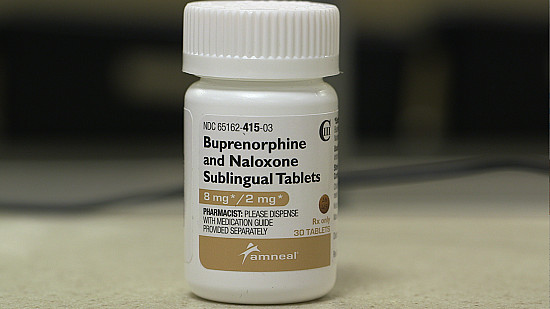What’s the best way to quit smoking?

ARCHIVED CONTENT: As a service to our readers, Harvard Health Publishing provides access to our library of archived content. Please note the date each article was posted or last reviewed. No content on this site, regardless of date, should ever be used as a substitute for direct medical advice from your doctor or other qualified clinician.
Smoking cigarettes contributes to almost 1 in 5 deaths. The top three smoking-related causes of death are cardiovascular disease, lung cancer, and chronic obstructive pulmonary disease (COPD). In addition to these “top three,” smoking is also linked to a number of other cancers, an increased likelihood of getting more colds and infections, diabetes, osteoporosis and hip fractures, problems in pregnancy, difficulty with erections, stomach ulcers, gum disease, and the list goes on.
Quitting smoking can add years to your life. Though the earlier the better, it’s never too late to quit. The benefits of quitting are real, even at the age of 80!
So what’s the best way to quit?
Set a quit date
Pick a date in the next few weeks, share it with your friends and your family, and mark it on your calendar. Plan to completely stop smoking on that quit date. Think about what might make it challenging to stop. Be prepared for how you will handle any withdrawal symptoms. Identify what triggers your craving for a cigarette, and have a strategy to avoid or deal with these triggers. Start exercising before your quit date to minimize weight gain when you stop smoking. Find healthy distractions to keep your mind and hands busy. Have nicotine replacement products like nicotine gum and patches ready on hand if you plan to use them.
Going “cold turkey” might be better
You can choose to cut down on your cigarettes gradually before your quit date, or smoke as you normally do up until your quit date. Either is fine, but it seems that quitting abruptly, going “cold turkey,” might be better.
A recent study randomly assigned about 700 participants to either gradually cut back on smoking over two weeks or quit abruptly on a set quit date. Both groups were offered counseling support as well as nicotine patches and other forms of short-acting nicotine replacement. The group assigned to cold turkey was significantly more successful at quitting smoking, both at the 4-week follow-up (49% vs. 39%) and the 6-month follow-up (22% vs. 15%).
Many people need extra support
Though some people are successful on their own, many have a hard time—and it often takes multiple tries to quit for good. Ask for help. There are many ways to get support, from one-on-one in person, to telephone call support, to mobile phone aps. Many counseling programs are free, and will even provide nicotine patches without charge.
In addition to your doctor, here are some places to start:
- 1-800-QUIT-NOW
- smokefree.gov
Treatments available
Treatment with medications (nicotine replacement, varenicline, or bupropion) increases quit-rates, especially when combined with counseling. These medications may help with cravings, withdrawal symptoms, and other side effects of quitting smoking. All of these agents can be used even if a person has not completely stopped smoking. Varenicline and bupropion take some time to work, so they should be started a week to several weeks before the quit date, depending on the medication. Talk to your doctor about which treatment is suitable for you, especially if you have depression.
If these various treatments don’t work, they may also be tried in combination. In addition, there are other alternative treatments, like acupuncture and hypnosis, but success has been less clear with these.
- Nicotine replacement. Using nicotine replacement doubles the quit-rate. It helps with withdrawal symptoms and cravings, and can be tapered off easily as withdrawal symptoms improve. There are many forms available over-the-counter or with prescription: patches, gum, lozenges, nasal spray, and inhaler. The highest dose patch (21mg) should be used if the smoker smokes more than 10 cigarettes a day. The patch delivers nicotine through the skin over 24 hours, but can also be removed at bedtime. The other short-acting forms of nicotine replacement can be used alone, or used with patches as needed for cravings or on a regular schedule at first (e.g. hourly while awake).
- Varenicline (Chantix). Varenicline works by binding to nicotine receptors in the body, partly turning them on to reduce withdrawal symptoms, but also blocking them from the nicotine in cigarettes and thus making smoking less pleasurable. So far, varenicline has shown the highest quit-rate in studies.
- Bupropion (Zyban, Wellbutrin SR). Bupropion is felt to work by working on the brain’s hormones. It has the added benefit of minimizing the initial weight gain with stopping smoking. Treatment for longer duration may help prevent relapse in those who have quit. It cannot be used in those who have a history of seizure disorders.
Most smokers who stop will feel better, and stopping will lower their risk of getting (and dying from) smoking-related illnesses. But quitting smoking can be very difficult. If you are a smoker and you want to stop, talk to your doctor about what the best options are for you to help you succeed.
About the Author

Wynne Armand, MD, Contributor
Disclaimer:
As a service to our readers, Harvard Health Publishing provides access to our library of archived content. Please note the date of last review or update on all articles.
No content on this site, regardless of date, should ever be used as a substitute for direct medical advice from your doctor or other qualified clinician.















